 W
WAkodon spegazzinii, also known as Spegazzini's akodont or Spegazzini's grass mouse, is a rodent in the genus Akodon found in northwestern Argentina. It occurs in grassland and forest at 400 to 3,500 m above sea level. After the species was first named in 1897, several other names were given to various populations now included in A. spegazzinii. They are now all recognized as part of a single, widespread and variable species. Akodon spegazzinii is related to Akodon boliviensis and other members of the A. boliviensis species group. It reproduces year-round. Because it is widely distributed and common, Akodon spegazzinii is listed as "least concern" on the IUCN Red List.
 W
WThe armored rat is a species of rodent in the family Echimyidae. It is monotypic within the genus Hoplomys. It is found in Latin America, from northern Honduras to northwest Ecuador. It possesses a range of spines on its back and sides of the body.
 W
WThe black and red bush squirrel is a species of rodents in the family Sciuridae occurring in Malawi, Tanzania, and Zambia. In Malawi, it is found in Misuku Hills and Nyika Plateau and in Tanzania Poroto Mountains and Mount Rungwe; it has not been found in Zambia where it was expected to occur in Mafinga Hills and Makutu Mountains. Its natural habitats are subtropical or tropical moist montane forest, subtropical or tropical dry shrubland, and subtropical or tropical dry lowland grassland. It may be threatened by habitat loss.
 W
WThe black snub-nosed monkey, also known as the Yunnan snub-nosed monkey, is a large black and white primate that lives only in the southern Chinese province of Yunnan, where it is known to the locals as the Yunnan golden hair monkey (滇金丝猴) and the black-and-white snub-nosed monkey (黑白仰鼻猴). The common name, black snub-nosed monkey, is issued to Rhinopithecus strykeri, inhabiting in Northern Sino-Myanmar border. Coniferous and deciduous forests in the mountainous regions of Yunnan are the ideal terrain for these primates. It is threatened by habitat loss, and is considered an endangered species. With their unique adaptations to their environment, these monkeys thrive at extreme altitudes despite the below freezing temperatures and thin air. This primate's diet is mainly made up of the large amounts of lichens available in their region. Recent studies have provided more information on the black-and-white snub-nosed monkey, but there is still much to learn about them.
 W
WThe black-eared mouse, or black-eared deer mouse, is a species of rodent in the family Cricetidae, native to North America.
 W
WThe coppery ringtail possum is a species of marsupial in the family Pseudocheiridae. It is found in Indonesia and Papua New Guinea.
 W
WThe desert bandicoot is an extinct bandicoot of the arid country in the centre of Australia.
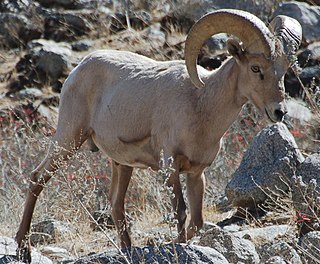 W
WThe desert bighorn sheep is a subspecies of bighorn sheep that is native to the deserts of the United States' intermountain west and southwestern regions, as well as northwestern Mexico.
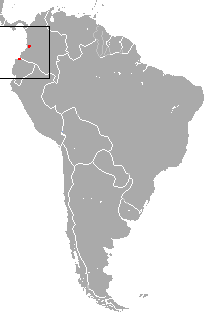 W
WThe Ecuadorian sac-winged bat is a species of sac-winged bat in the family Emballonuridae. It is found in Colombia and Ecuador. According to the IUCN Red List of Threatened Species, the population trend is decreasing for this species, due to habitat destruction through deforestation. In 2013, Bat Conservation International listed this species as one of the 35 species of its worldwide priority list of conservation.
 W
WThe fringed myotis is a species of vesper bat that is found in British Columbia in Canada, Mexico, and the western United States.
 W
WThe Mazama pocket gopher is a smooth-toothed pocket gopher restricted to the Pacific Northwest. The species ranges from coastal Washington, through Oregon, and into north-central California.
 W
WThe Guadalupe fur seal is one of six members of the fur seal genus Arctocephalus. Sealers reduced the population to just a few dozen by the late 19th century, but the species had recovered to 10,000 in number by the late 1990s. Many individuals can be found on Mexico's Guadalupe Island.
 W
WThe Jaliscan cotton rat or Mexican cotton rat is a species of rodent in the family Cricetidae. It is found only in Mexico. They commonly have brown fur with white fur on the belly. They are ground-dwelling and prefer open habitats.
 W
WThe long-footed water rat is a species of rodent in the family Muridae. It is found in the mountains of southern Papua New Guinea. Its natural habitat is subtropical or tropical dry forest.
 W
WMaclaud's horseshoe bat is a species of bat in the family Rhinolophidae. It is endemic to Guinea. Its natural habitats are moist savanna, caves, and subterranean habitats. It is one of five African microbat species to be listed as endangered by the IUCN. In 2013, Bat Conservation International listed this species as one of the 35 species of its worldwide priority list of conservation. It is threatened by habitat loss.
 W
WMearns's squirrel is a species of squirrel native to Mexico. It is an endangered species that occurs in low densities and is threatened by habitat loss. It is possibly also threatened by competition from the eastern gray squirrel, which was introduced to the range of Mearns's squirrel in 1946, but may not be present anymore. It is closely related to the Douglas squirrel, but far less is known about its behavior, which was first studied in detail in 2004. It is named for the 19th-century American naturalist Edgar Mearns.
 W
WThe Mexican shrew is a species of mammal from the subfamily Soricinae in the family Soricidae. It is monotypic within the genus Megasorex and is endemic to Mexico.
 W
WThe Michoacan deer mouse is a species of rodent in the family Cricetidae. It is the only species in the genus Osgoodomys, and is endemic to Mexico.
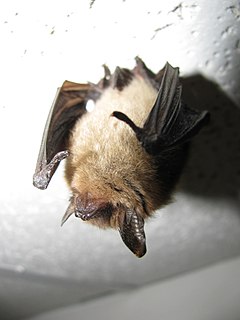 W
WMyotis septentrionalis, the northern long-eared bat or northern myotis, is a species of bat native to North America. There are no recognised subspecies. The northern long-eared bat is about 3–3.7 inches in length, with a wingspan of 9–10 inches. It is distinguishable by its long ears when comparing it to other bats in its genus. This species is commonly found in the northern United States and Southern Canada east of British Columbia. The geographic range includes 37 states.
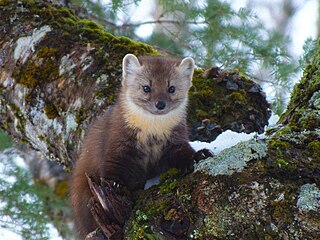 W
WThe Newfoundland pine marten is a genetically distinct subspecies of the American marten found only on the island of Newfoundland in the province of Newfoundland and Labrador, Canada; it is sometimes referred to as the American marten and is one of only 14 species of land mammals native to the island. The marten was listed as endangered by the COSEWIC in 2001 and has been protected since 1934, however the population still declines. The Newfoundland marten has been geographically and reproductively isolated from the mainland marten population for 7000 years. The Newfoundland pine marten is similar in appearance to its continental cousin, but is slightly larger, with dark brown fur with an orange/yellow patch on the throat. Females are an average weight of 772 grams and males have an average weight of 1275 grams. The Newfoundland subspecies is also observed to inhabit a wider range of forest types than its mainland counterparts. The population characteristics suggest that the Newfoundland marten is a product of unique ecological setting and evolutionary selective factors acting on the isolated island population. The Newfoundland pine marten is omnivorous, feeding on mainly small mammals, along with birds, old carcasses, insects and fruits; it is currently found in suitable pockets of mature forest habitat, on the west coast of Newfoundland and in and around Terra Nova National Park. The Pine Marten Study Area (PMSA) is located in southwestern Newfoundland and is a 2078 km2 wildlife reserve that was created in 1973 to protect the Newfoundland Marten.
 W
WThe northern brushtail possum is a nocturnal marsupial inhabiting northern Australia. The northern brushtail possum is sometimes considered a species, however more often than not is considered a subspecies of the common brushtail possum.
 W
WThe Northern Luzon shrew-rat is a species of rodent in the family Muridae. It is found only in the Philippines. Its natural habitat is subtropical or tropical dry forest. It is threatened by habitat loss.
 W
WThe Mexican mouse opossum is a species of North American opossum in the family Didelphidae.
 W
WOryzomys peninsulae, also known as the Lower California rice rat, is a species of rodent from western Mexico. Restricted to the southern tip of the Baja California peninsula, it is a member of the genus Oryzomys of family Cricetidae. Only about twenty individuals, collected around 1900, are known, and subsequent destruction of its riverine habitat may have driven the species to extinction.
 W
WPalmer's chipmunk is a species of rodent in the family Sciuridae, endemic to Nevada. Its natural habitat is temperate forests. It is threatened by habitat loss.
 W
WThe plush-coated ringtail possum or golden ringtail possum is a species of marsupial in the family Pseudocheiridae. It is found in Indonesia, Papua New Guinea, and the Solomon Islands. Its natural habitat is subtropical or tropical dry forests.
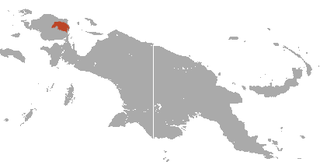 W
WThe reclusive ringtail possum or Monk ringtail possum is a species of marsupial in the family Pseudocheiridae. It is endemic to the Arfak Mountains in the Vogelkop Peninsula of West Papua, Indonesia.
 W
WThe red rock rat, or red veld rat, is a species of rodent in the family Muridae native to southern Africa.
 W
WThe mesic four-striped grass rat is a species of rodent in the family Muridae.
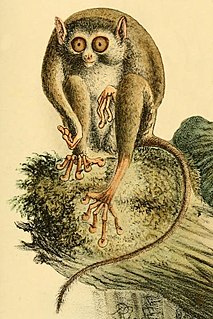 W
WThe Sangihe tarsier, also known as Sangihe Island tarsier, is a small primate found on Sangir Island, which is located about 200 kilometers north-east of the island of Sulawesi in Indonesia. In 2008 a population of the Sangihe tarsier was determined to be a distinct species, the Siau Island tarsier.
 W
WSclater's shrew is a species of mammal in the family Soricidae. It is endemic to Mexico.
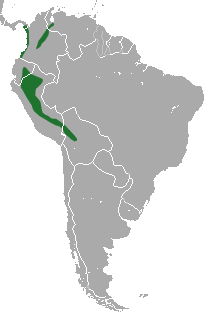 W
WThe sepia short-tailed opossum is a species of opossum in the family Didelphidae found in Colombia, Ecuador, Panama, Peru and Venezuela.
 W
WSharpe's or northern grysbok is a small, shy, solitary antelope that is found from tropical to south-eastern Africa.
 W
WThe slender yellow bat is a species of vesper bat. It is found only in Mexico.
 W
WThe southeastern myotis is a small bat found throughout the Gulf Coastal Plain and the Lower Mississippi Alluvial Plain of the southeastern United States.
 W
WThomas's small-eared shrew is a species of mammal in the family Soricidae. It is found in Colombia, Ecuador, and Peru.
 W
WThe tiny yellow bat is a species of vesper bat. It is found in Colombia and Venezuela.
 W
WThe gray-tailed vole also known as the gray-tailed meadow vole or gray-tailed meadow mouse, is a rodent in the genus Microtus of the family Cricetidae. Voles are small mammals, and this species lies roughly in the middle of their size range. First collected in 1895, it is endemic to the Willamette Valley, Oregon, and Clark County, Washington, in the Pacific Northwest region of North America. Historically, they were found in the prairie areas of the Valley and, though many of these areas have been converted for agricultural purposes, these animals remain common. For reasons that remain unclear, vole population densities in any area may fluctuate widely from season to season and year to year. They are preyed upon by owls, hawks, and carnivorous mammals, and their parasites include fleas and ticks. These voles build burrows and complex tunnel networks, which they sometimes share with other burrowing animals. Relatively little is known about their behavior in the wild, because they are elusive and unlikely to enter traps.
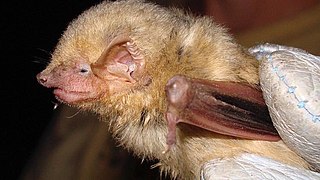 W
WThe western yellow bat is a species of vesper bat. It is found in Mexico and the southwestern United States. This species roosts in trees such as Populus fremontii, Platanus wrightii, and Quercus arizonica. If available, the western yellow bat will use the dead fronds that encircle palm trees as a roosting site.
 W
WThe white-striped dorcopsis or greater forest wallaby is a species of marsupial in the family Macropodidae. It is found in the northern part of West Papua, Indonesia and Papua New Guinea. It is a common species in suitable tropical forest habitat and the IUCN lists its conservation status as being of "Least concern".